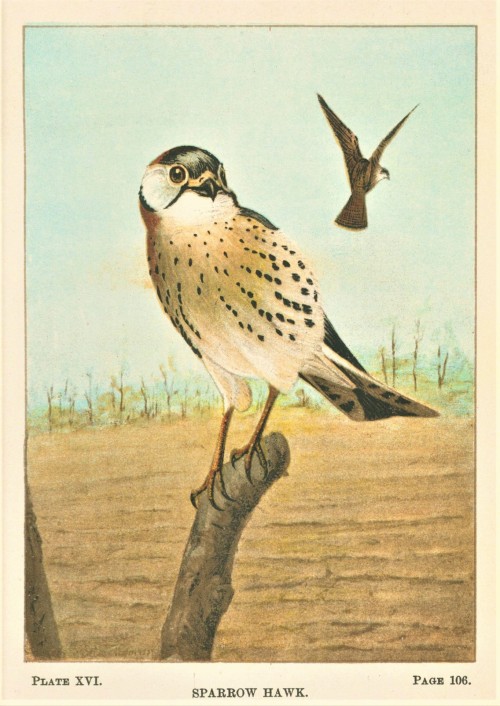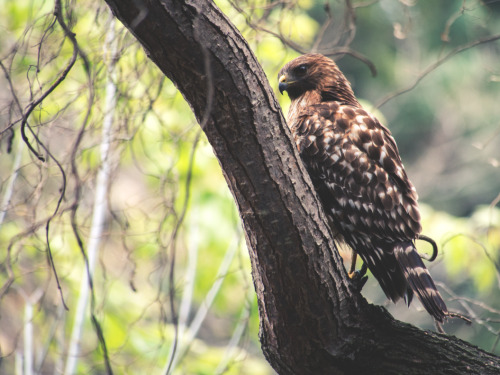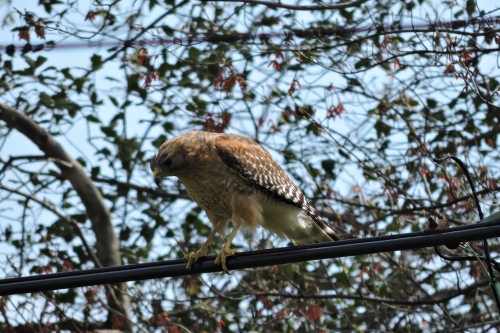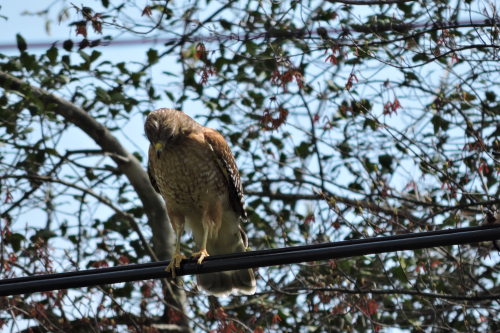#red-shouldered hawk
A Hawkish Fearthursday
With what is going on in the world today, a few of us are feeling a little hawkish, but instead of acting on these feelings in some bellicose way, we’ve decided to channel that angst into these images of lovely North American raptors. These are color lithographs from our 1907 edition of Bird-Life, A Guide to the Study of our Common Birds, by American ornithologist Frank M. Chapman, with illustrations by the English-Canadian-American wildlife artist Ernest Thompson Seton, published in New York by D. Appleton and Company. Shown here from top to bottom:
- American Kestrel(Falco sparverius), identified here as a Sparrow Hawk.
- Red-shouldered Hawk(Buteo lineatus).
- Northern Harrier (Circus hudsonius), identified here as a Marsh Hawk.
- Sharp-shinned Hawk(Accipiter striatus).
- Osprey(Pandion haliaetus).
While all are “hawkish,” their familial relationships aren’t always straightforward. Of the birds shown here, all are in the order of Accipitriformes, except for the American Kestrel which is in the entirely separate order of Falconiformes. The rest are in the family Accipitridae, except the Osprey, which is in the family Pandionidae. Of the remaining Accipritidae in this group, all are in different sub-families and genera and … oh the family politics!
We just hope that your own hawkishness is spent contemplating the beauty and grace of this very diverse group of birds.
Viewother posts from Bird-Life.
Post link
A Red-shouldered hawk perches on a tree above the Great Horned Owl Exhibit, at CuriOdyssey. In the wild, hawks and owls are known to swoop down and harass each other if their territories (nests) are too close. Hawks will harass during the day, and owls get their revenge at night. The act can be dangerous for either animal and their young. Soon after taking this picture, the hawk flew away, just outside the raptor yard where CuriOdyssey’s Red-shouldered hawk, ambassador lives. The two then proceeded to “talk” for quite some time as often do.
Post link














